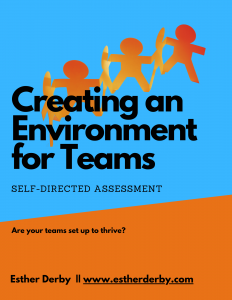As a coach, your job is not to solve or do—it’s to support other people as they develop skills and capabilities and as they solve problems on their own. When it comes to coaching, one size does not fit all. You need to have a variety of practices in your toolkit in order to approach each situation and individual differently. Here are some of the approaches I use when coaching other people.
Provide Context
Sometimes all a person needs is some context. Knowing how a specific task or skill fits into the work of the team or supports the product helps people make better decisions. And knowing the importance of an activity can motivate people to do tasks they don’t normally enjoy. For example, a person may not like test-first development when he first tries it, but when he understands how it contributes to clean code and good design, he may be more willing to stick with it.
Frame the Problem
Sometimes people need help framing the problem. When people are learning a new skill or a new way of thinking they don’t always have a clear understanding of the problem they’re trying to solve. Ask them questions to help them consider and verbalize different aspects of the problem—the what, where, when, who, and how. Having a clear problem statement is (at least) half the battle.
Generate More Options
In other cases, a team member may choose a solution that you know will not be effective. How do you help without being directive? Well, it helps to know that people always choose what they perceive to be the best option available. Always. The trouble is, sometimes people don’t have enough good options to choose from—the only options they can think of either won’t work or work only in the short term. To help them come up with a longer list of options, ask questions. These questions might include:
- What other ways could we accomplish the same goal?
- What would happen if we did this part differently?
Rather than reject an option (or worse, dismiss the person), walk through the option with him or her. Start by saying, “You could do that—and here are some of the risks I see.” Generate additional options together. You can offer the first option, then move to jointly generating alternatives. Between you, come up with at least three options. Having only two options is a dilemma; and it forces a choice between “your way” and “my way.”
Provide Real-Time Feedback
Many times, when performing a new skill, people need to hear some real-time feedback to get a feel for how what they are doing is affecting the project. Help them by offering course corrections and confirmation. Just remember that feedback is information that enables different choices; it’s not criticism or evaluation. Describe what you see or hear and state the impact.
Ask Questions
Sometimes people just get stuck. A few well-chosen questions can prompt new thinking. Here are some that work well for me:
- If you did that, what would you gain? / If you did that, what would the collateral consequences be?
- What are three things that could go wrong with that approach?
- What else have you tried?
- What are you hoping to accomplish?
- Who else is affected by this?
- Who else / what else will be affected by this solution?
Catch People Doing Something Right
You don’t have to wait until something is going wrong to provide coaching. Notice when people are performing a new skill correctly and comment on it. If the moment seems right, use the opportunity to explore the root causes of the success. When people know more about the steps and circumstances that lead to good results, they can consciously recreate them.
Demonstrate
Some individuals learn best by seeing it done. In those cases, demonstrating a new skill for them might be your best option. For example, you might teach about Test-Driven Design (TDD) by demonstrating with FitNesse. As you demonstrate ask if your pace is too slow, too fast, or just right. If you only ask if you’re going too fast, the other person may be embarrassed to admit he isn’t keeping up.
Review
Other people learn best by trying it themselves first and then reviewing it with the coach. Always start by stating what works and making global comments about the work product. Only then should you talk about the problems or issues. If there are classes of issues, discuss those rather than pointing out each instance of the problem.
Provide Information
Coaches are a source of information—and sometimes that’s all the other person needs. Depending on your own skill level, ask questions to understand the problem the person is trying to solve. After you understand the problem, offer examples of what has worked before or what factors they might want to consider. It’s common for people who are learning a new skill to think they need one thing when they really need another.
Bring In an Expert
No one expects you to have all the answers. So when you don’t have the answer, don’t hesitate to bring in another knowledgeable person. You’ll solve the problem sooner and model that it’s okay to ask for help.
Listen
One of the most powerful (and underutilized) coaching practices is listening. Being a sounding board as someone talks through a problem or proposed course of action lets the other person hear their own logic. And as people talk they often come up with new ideas or see weakness on their own. Listening also conveys that you are interested in them not just in showing off your expertise.
Coaches look for opportunities to help build skills and capabilities. The more coaching approaches you have available to you, the more opportunities you will see—and use.


